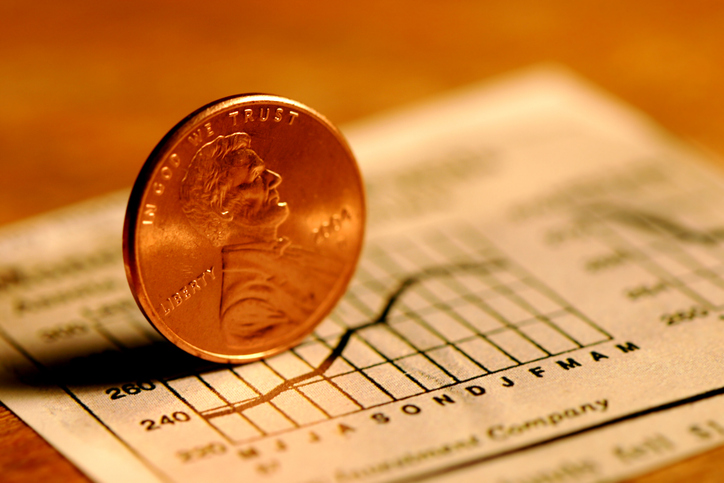Stock Market Today: A Historic Quarter Closes on High Notes
"All's well that ends well" is one way to describe the second quarter of 2025, at least from a pure price-action perspective.



The last day of the second quarter and the first half opened on positive notes after the U.S. and Canada restarted trade talks over the weekend. Stocks held modest gains on relatively light volume ahead of Jobs Thursday during a holiday-shortened trading week.
Prime Minister Mark Carney said Canada would not collect a digital service tax scheduled to take effect Monday, satisfying President Donald Trump's demand and setting the stage for a broader bilateral trade agreement by July 21.
Focus for investors, traders and speculators now turns to Thursday's 8:30 am Eastern Standard Time release of the June jobs report.
From just $107.88 $24.99 for Kiplinger Personal Finance
Become a smarter, better informed investor. Subscribe from just $107.88 $24.99, plus get up to 4 Special Issues

Sign up for Kiplinger’s Free Newsletters
Profit and prosper with the best of expert advice on investing, taxes, retirement, personal finance and more - straight to your e-mail.
Profit and prosper with the best of expert advice - straight to your e-mail.
"After a rebounding tech sector propelled the S&P 500 back to all-time highs last week," observes E*TRADE Managing Director Chris Larkin, "it may be up to the labor market to keep the momentum going this week."
Larkin adds that "with the tariff picture still up in the air, a negative surprise on the jobs front could have more of an impact, especially during what will likely be a light-volume holiday week."
Note that the U.S. stock market will close at 1 pm and the bond market will close at 2 pm Thursday. Both the stock market and the bond market are closed Friday in the U.S. in observance of Independence Day.
Stocks and bonds... U.S. stocks and bonds
Talk about President Trump's trade war dominated the second quarter. The story is far from finished, and key tariff dates are coming in heavy with potential to disrupt markets all over again.
Morgan Stanley strategists Vishwanath Tirupattur and Serena Tang, noting investors "have many reasons for rethinking allocations to any market" – including earnings, valuations and economic growth – address the uncertainty narrative in price terms.
So far, despite historic volatility, headline performance data suggest all is well after everything that went down in April came back up by June – and that goes for stocks as well as bonds.
"Weekly data across global equity ETFs and mutual funds from Lipper show that international investors have been net buyers through the weeks after Liberation Day and most of May," the strategists write.
Indeed, the data show that while foreign investors were adding to U.S. stocks, U.S. investors were net sellers.
"Overall," Tirupattur and Tang conclude, "we don't find much evidence to support the narrative that foreign investors have been reallocating away from U.S. stocks."
Meanwhile, bond funds' data tell a similar story. "Net fund inflows to U.S. bond funds have been positive," the analysts find.
At the closing bell, the S&P 500 was up 0.5% at 6,204, the Nasdaq Composite added 0.5% to 20,369, and the Dow Jones Industrial Average had risen 0.6% to 44,094.
The S&P ended the second quarter with a gain of 11.2% – its best three-month performance since October to December 2023. The broad-based index is up 5.4% year to date.
The Nasdaq rose 17.7% during the second quarter and is now up 5.5% in 2025. The Dow added 6% from April through June and is higher by 3.5% this year.
And, at the end of one of the most volatile three-month periods of the century, the yield on the 10-year U.S. Treasury note closed at 4.226% vs 4.245% as of March 31 and a quarterly peak of 4.607% on May 21.
The 10-year Treasury yield hit a 2025 high of 4.896% on January 13.
Up and mixed
Stocks closed generally higher Monday, but performance among the sectors was, of course, mixed. As it was for the second quarter, terrain tells a more complex story than headlines permit.
Financial stocks, for example, led the way higher after the Fed's annual stress test results – announced after Friday's closing bell – revealed large banks are well positioned to weather a severe recession.
The tests also showed the "too big to fail" class is staying above minimum capital requirements and is still lending to households and businesses.
Consumer discretionary stocks, on the other hand, were the worst among the 11 S&P 500 sectors categorized by the Global Industry Classification Standard (GICS).
Financials such as Wells Fargo (WFC, +0.7%) and consumer discretionary stocks such as Amazon.com (AMZN, -1.8%) are both considered "risk on" leaders.
As Morgan Stanley strategists Tirupattur and Tang said, investors have many reasons to sell. But AMZN stock could be off today at least in part because its founder and executive chair offloaded $5.4 billion worth on his wedding day.
Still, this kind of mixed-up divergence makes perfect sense on the final trading day of this particular second quarter.
WFC and AMZN – whatever you think of big banks and Jeff Bezos – also make sense from a how to invest in what you know approach to the stock market.
Related content
- Are These the Next Stocks to Split?
- Why Investing Abroad Could Pay Off
- Who Will Replace Jerome Powell as Fed Chair?
Profit and prosper with the best of Kiplinger's advice on investing, taxes, retirement, personal finance and much more. Delivered daily. Enter your email in the box and click Sign Me Up.

David Dittman is the former managing editor and chief investment strategist of Utility Forecaster, which was named one of "10 investment newsletters to read besides Buffett's" in 2015. A graduate of the University of California, San Diego, and the Villanova University School of Law, and a former stockbroker, David has been working in financial media for more than 20 years.
-
 Top Tech Gifts to Grab at Walmart Before Christmas
Top Tech Gifts to Grab at Walmart Before ChristmasBig savings on Apple, Bose, HP, Vizio and more while there's still time to shop.
-
 AI Appliances Aren’t Exciting Buyers…Yet
AI Appliances Aren’t Exciting Buyers…YetThe Kiplinger Letter Artificial intelligence is being embedded into all sorts of appliances. Now sellers need to get customers to care about AI-powered laundry.
-
 Ask the Editor: IRAs, 401(k)s and RMDs
Ask the Editor: IRAs, 401(k)s and RMDsAsk the Editor In this week's Ask the Editor Q&A, Joy Taylor answers questions on IRAs, 401(k)s and required minimum distributions
-
 Got $100 to Gamble? These Penny Stocks Could Be Worth the Ride
Got $100 to Gamble? These Penny Stocks Could Be Worth the RideVolatile penny stocks are high-risk plays with potentially high rewards. If you have $100 you can afford to lose, these three names are worth a look.
-
 Quick Question: Are You Planning for a 20-Year Retirement or a 30-Year Retirement?
Quick Question: Are You Planning for a 20-Year Retirement or a 30-Year Retirement?You probably should be planning for a much longer retirement than you are. To avoid running out of retirement savings, you really need to make a plan.
-
 Don't Get Caught by the Medicare Tax Torpedo: A Retirement Expert's Tips to Steer Clear
Don't Get Caught by the Medicare Tax Torpedo: A Retirement Expert's Tips to Steer ClearBetter beware, because if you go even $1 over an important income threshold, your Medicare premiums could rise exponentially due to IRMAA surcharges.
-
 I'm an Insurance Pro: Going Without Life Insurance Is Like Driving Without a Seat Belt Because You Don't Plan to Crash
I'm an Insurance Pro: Going Without Life Insurance Is Like Driving Without a Seat Belt Because You Don't Plan to CrashLife insurance is that boring-but-crucial thing you really need to get now so that your family doesn't have to launch a GoFundMe when you're gone.
-
 Dow Adds 646 Points, Hits New Highs: Stock Market Today
Dow Adds 646 Points, Hits New Highs: Stock Market TodayIt was "boom" for the Dow but "bust" for the Nasdaq following a December Fed meeting that was less hawkish than expected.
-
 I'm a Tax Attorney: These Are the Year-End Tax Moves You Can't Afford to Miss
I'm a Tax Attorney: These Are the Year-End Tax Moves You Can't Afford to MissDon't miss out on this prime time to maximize contributions to your retirement accounts, do Roth conversions and capture investment gains.
-
 I'm an Investment Adviser: This Is the Tax Diversification Strategy You Need for Your Retirement Income
I'm an Investment Adviser: This Is the Tax Diversification Strategy You Need for Your Retirement IncomeSpreading savings across three "tax buckets" — pretax, Roth and taxable — can help give retirees the flexibility to control when and how much taxes they pay.
-
 Dow Rises 497 Points on December Rate Cut: Stock Market Today
Dow Rises 497 Points on December Rate Cut: Stock Market TodayThe basic questions for market participants and policymakers remain the same after a widely expected Fed rate cut.